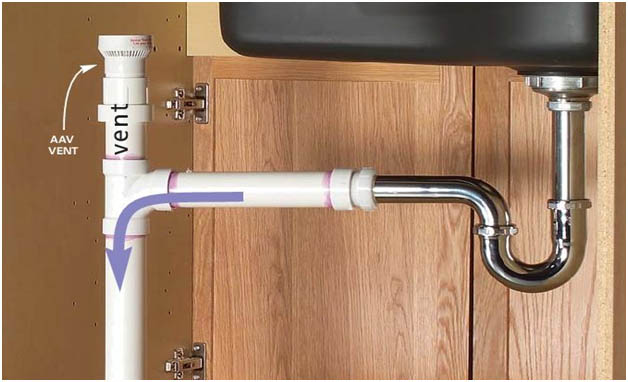A common difficulty in pipes remodeling is figuring out how to run new vent lines when accessibility to the existing drain-waste-vent system is obstructed by some structural element. It might look like all hope is lost, but do not let that small roadblock get in the way of your dream kitchen remodel. One alternative is an air admittance valve or AAV in short.
These valves are gravity-operated apparatus that respond to the negative strain of draining water and open to allow air in. Then gravity closes the valve, maintaining sewer gases out of the room. Depending on the valve and the size of the port, AAVs can encourage one or several vent lines. But before starting installing an air admittance valve, check with the regional building inspections office as neighborhood codes govern the use of AAVs in place of vents. We have done the required research on AAVs and provided below with steps to help you in the process of installing air admittance valves as a DIY project.

Understand The Way AAVs Work
Before you install one, it’s important to realize how AAVs work. Air admittance valves are operated by gravity. When waste and water move down a drain line, it generates negative air pressure in the pipe.
Once the negative pressure stops, the washing machine drops back in place. Earlier versions of this device were spring-operated. These units are still available but aren’t reliable and don’t meet code in many places.
Determine Placement They are normally mounted on one leg of a sanitary teeshirt, with another leg visiting the drain. The device must be placed in compliance with local codes and the manufacturer’s directions.
Install PVC Drain Line The appropriate coupling for the AAV (glued or threaded) attaches to the tee. Check the manufacturer’s instructions and local codes to determine the proper elevation for the AAV over the drain.
Attach Air Admittance Valve
Based on the Sort of fitting, paste or screw the AAV in place. Look to the manufacturer’s directions if you require extra assistance.
Check Function
Depending on local codes and the AAV version, the completed installation should look something like this. AAVs always have to be installed vertically and need to be unobstructed from objects under the sink. Here’s a good illustration. Watch the white pipe onto the roof at the left. The plastic pipe is”flashed” or sealed in the roof penetration to stop rainwater from leaking to the building.
Read Also: How to Remove Permanent Marker
During maintenance, you will wish to be assured the top of the port is maintained open. A blocked vent can be caused by leaves, dead animals, and ice dams (in very cold climates). The other”not-so-common” way the vent can become clogged is every time a horizontal part of this ventilation system itself (inside the attic) is sloped the wrong way. When that occurs it may fill with rainwater or condensation. Experienced home inspectors should be on the lookout for all these ailments.
More For You: